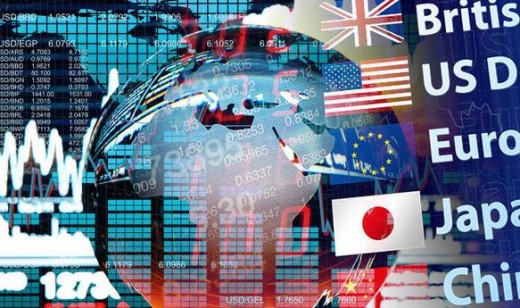The First Twenty Years of Amazon
Amazon Empire: The Rise and Reign of Jeff Bezos
Bezos
Jeffrey Preston Bezos was a Wall Street hedge fund executive before becoming one of the world's most influential e-commerce entrepreneurs. After reading web use would grow by 2,300% per year, Bezos had read enough (Walker, 2004). In 1994 Jeffrey developed the entire business plan for an online retail bookstore on a napkin during a cross-country drive from New York to Seattle. Bezos named his new venture after the longest river in the world, the wild Amazon. The massive river is known for its vein-like tributaries and limitless branches of flowing streams, and Amazon.com has lived up to the name from the beginning. The performance of Amazon from its inception granted its founder the title Person Of The Year by Time Magazine in 1999 (Ramo, 1999). Amazon celebrated its 20th anniversary as a public company in 2017 and its success, like its namesake, has not and is still not slowing down.
Bezos is known for his optimism, entrepreneurial insightfulness, and prowess. According to him, entrepreneurship is less of a talent and more of a state of mind, requiring resourcefulness, problem-solving, and risk management. In 1995, before Amazon was born, Bezos and his small team used his charisma and never-say-never attitude to raise a million dollars of angel financing to get the idea off the ground. Satisfactory funding took several months to accumulate and required the generosity and faith of twenty-two individual angel investors to get Amazon off the ground (Walker, 2004).

Satisfaction Guaranteed
Bezos has always been heavily focused on customer service, as stated in his vision and mission for Amazon.com. Amazon's business model is rooted in customer-satisfaction through a user-friendly web platform and accommodating customer service representatives. And with the help of relaxed return policies, customer service employees ensure customers feel every word of Bezos' vision during each Amazon experience.

E-Commerce Industry
Amazon is thriving on the acceleration of economic globalization and regional integration and as such has excelled and propelled in the electronic commerce (e-commerce) industry for the past two decades (Xu, Zhang, Cao, Chen & Ye, 2016). The e-commerce industry has flourished in developed countries like Europe with a market size of $426 billion worldwide in 2012 followed closely by North America accounting for $389 billion (Xu et al., 2016). The Asian-pacific economy has developed its e-commerce industry by 23% since 2013. At the summit of growth rates in the Pacific are China and Indonesia. In 2016 China had the highest growth rate of 71% while Indonesia boasted a healthy 61% growth rate (Xu et al., 2016). You do not need to be an entrepreneurial savant to recognized e-commerce as a viable and valuable industry to dedicate investment time, money, and resources.

E-commerce and economy
Countries such as China and India have become more tech-savvy over the past few years. Both have boosted online business for the second and fourth-largest economies on the globe, simultaneously solidifying e-commerce in the world economy. Of these two countries, India has become the new frontier in e-commerce as well as in many other industries as politicians strive to move the Indian economy towards globalization and global integration.

To battle corruption and black-market money in India, Narendra Modi, the prime minister since 2014, demonetized the Rs500 and Rs1,000, canceling 86% of the value of cash in the economy's circulation (Chakravorti, 2017). A drastic move for an economy with considerable portions of the population operating outside the formal financial system and relies heavily on cash transactions (Chakravorti, 2017). The absence of an electronic transaction culture in India will present a problem for Amazon. Lack of computer access and limited automatic payment options renders a substantial portion of India's population unobtainable to strictly online proprietors like Amazon. However, Prime Minister Modi's currency experimentation has not stifled India's economy as it was the fourth fastest-growing economy as of 2017 (Chakravorti, 2017). The 2017 census for India recorded the population at 1.3 billion with an inflation rate of 4.9% and an unemployment rate of 3.5% (Index of Economic Freedom, 2017). India's current per capita income is $6,162, GDP (PPP) is $8 trillion with a 7.3% growth and a 5-year compound annual growth of 6.7%. These stats make it clear to many industry leaders that India is well worth the trouble of breaking down any barriers to entry.

Initial public offering. NASDAQ
Amazon made its initial public offering in May of 1997 on the NASDAQ, under the tag AMZN and raised $54 million (Bits, 1997). Amazon sold 3 million shares at $18 on May 14th after the market closed, opened at $27, rose to $30 and closed at $23.50 with a total volume of 6 million shares by May 15th (Sloan, 1997). Amazon's initial public offering (IPO) was labeled a frenzy by some stock journalist. Skeptics warned and even discouraged individuals from participating in the "classic internet stock frenzy" (Sloan, 1997).
Those who took the skeptical advice of stock journalists like Allen Sloan in 1997 missed the opportunity to purchase Amazon stock at $30 a share. Sloan stated in his 1997 Washington Post article on the topic:
"Amazon.com stock, disparaged by many people, including me, [is] overpriced at a proposed $13 a share, got sold at $18 on May 14th, then took off like sales of a new Stephen King novel....A classic frenzy...detrimental to your financial health (Sloan, 1997)."
Unfortunately, those who heeded Sloan's warnings would have gladly swallowed initial costs for a stock down 9% at $367 in 2014 (Tsuruoka, 2014). To add insult to injury, by September 29th, 2017, AMZM was selling at $962.74. And today, August 27th, 2019.....$1,757.94. A stock value that laughs in the face of all its naysayers from its formative years.

What's Important
Success for any startup venture is not guaranteed. Twenty years ago no reporters predicted Macy's and Sears would face extinction and would have valued those stocks over Amazon without a second thought. Unfortunately, both are threatening to close doors for good in 2019. Making it clear there are no fail-safe criteria for success, and once achieved, it is not guaranteed to sustain. What most entrepreneurs have in common is optimism, resilience, and a dedication to self-reliance, keeping them motivated to conquer any obstacle. Amazon.com as of today is a significant success story, and even that could eventually change. However, until Amazon's success begins to falter, the company will remain the world's leader in electronic commerce.
References
Bits (1997). Brandweek, 10644318, 05/19/97, Vol. 38, Issue 20. Database: Business Source Complete.
Chakravorti, B. (2017). Early Lessons from India's Demonetization Experiment. Harvard Business Review, March-14.
Index of Economic freedom, 2017 Retrieved from http://www.heritage.org/index/country/india.
Management Today, (2017). Company Vitae: Amazon. Management Today, Issue 3, p11-11. 1/3p., Database: Business Source Complete.
Ramo, J.C. (1999) The fast-moving Internet economy has a jungle of competitors... ... and here's the king. Time, issue 26, p50., Database: Academic Search Complete.
Sloan, A. (1997). Trains you can miss. Newsweek. 6/2/1997, Vol. 129, Issue 22, p48. 1p. Database: Academic Search Complete.
Tsuruoka, D. Investors Business Daily. 1/31/2014, p00. 1p. Database: Business Source Complete.
Walker, R. (2004). Jeff Bezos. Inc., Vol.26, Issue 4, p148-150. 3p., Database: Academic Search Complete.
Xu, Y., Zhang, X., Cao, J., Chen, Y., & Ye, X. (2016). DOI: 10.1155/2016/3452037. Collaboration and Evolution of E-Commerce and Express Delivery Industry Supply Chain. Discrete Dynamics in Nature and Society, 2016.
This content is accurate and true to the best of the author’s knowledge and is not meant to substitute for formal and individualized advice from a qualified professional.
© 2019 Lani Morris








